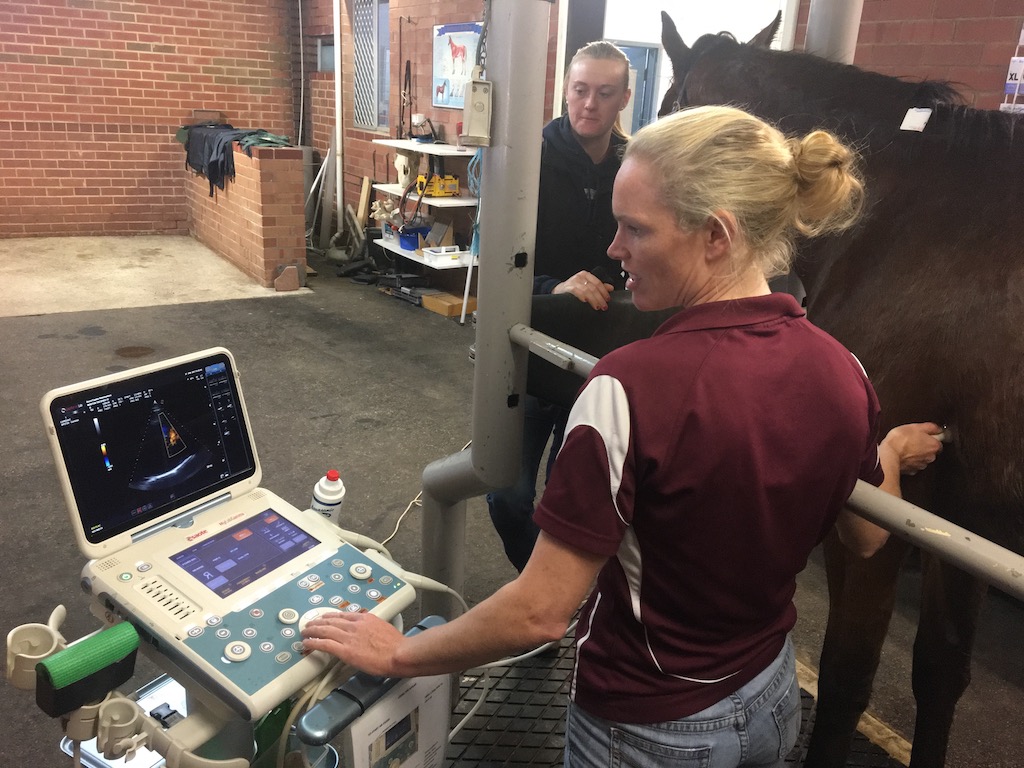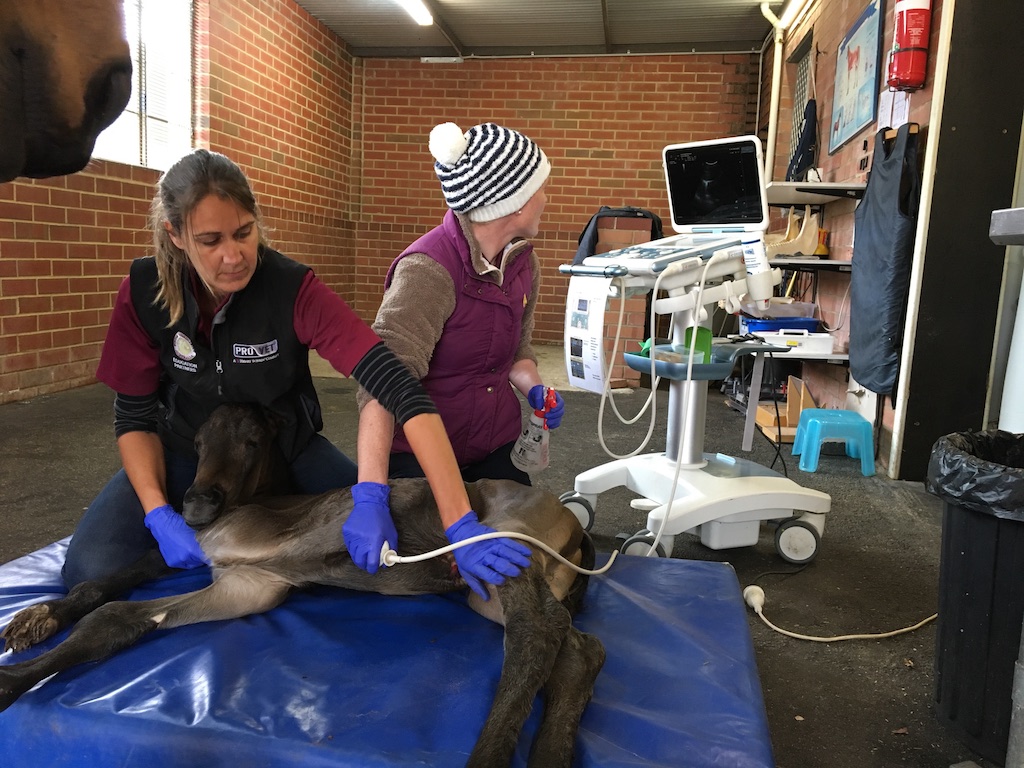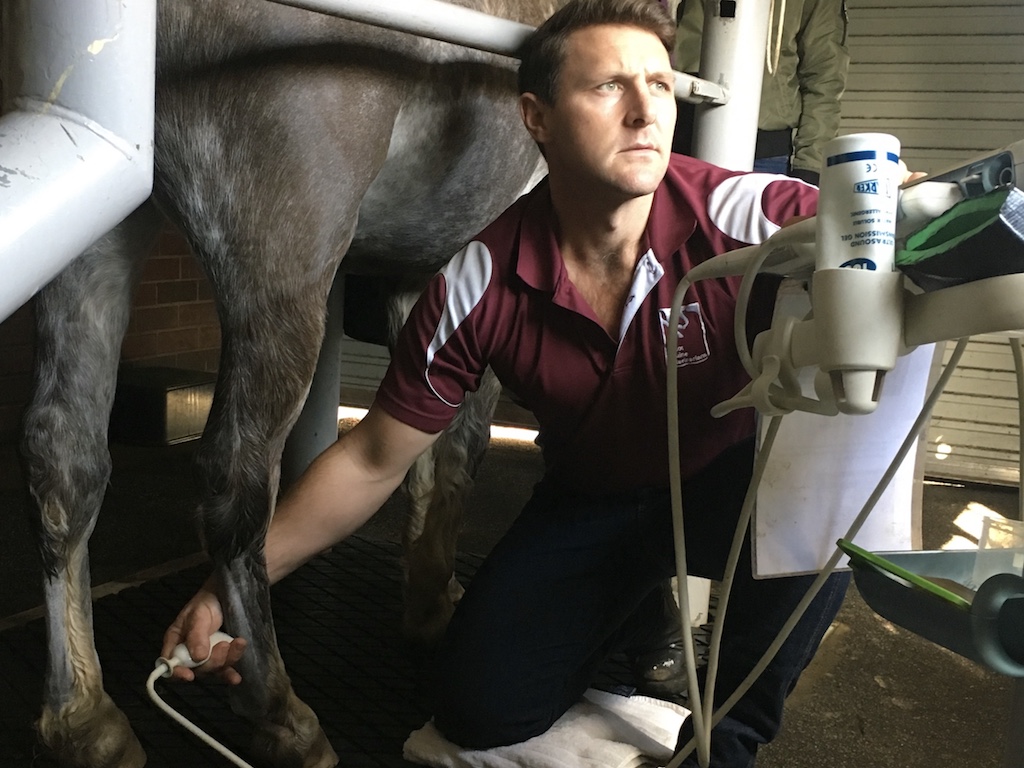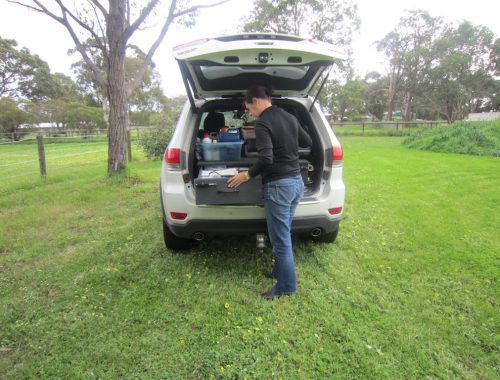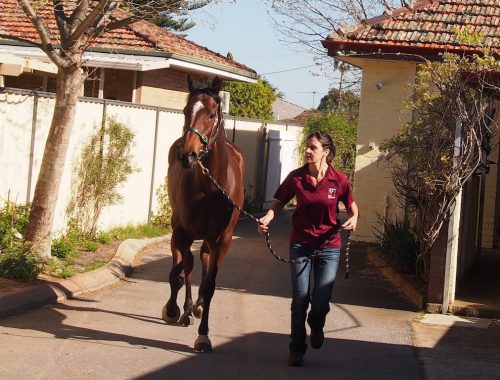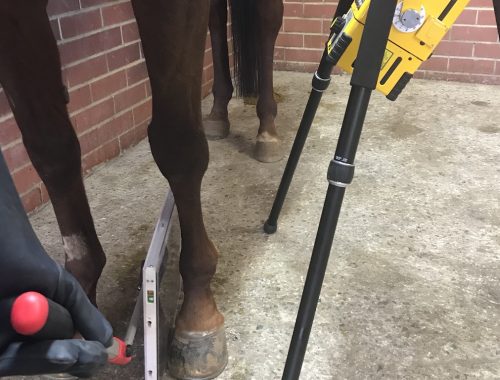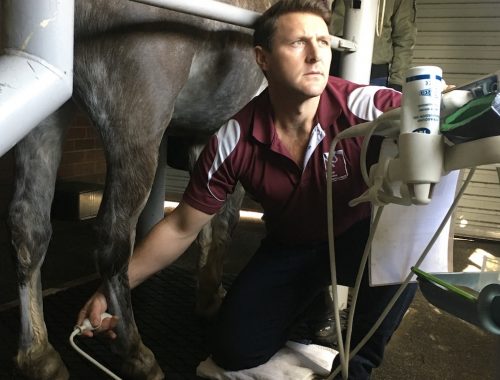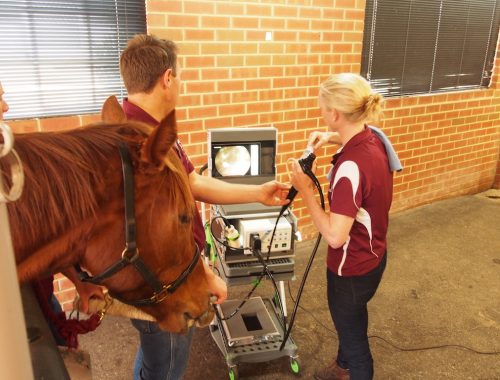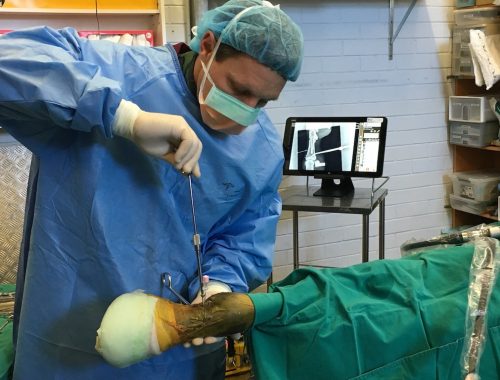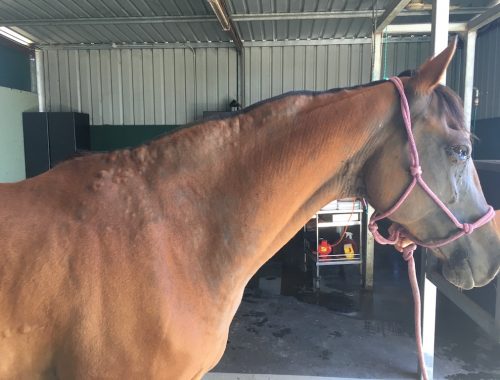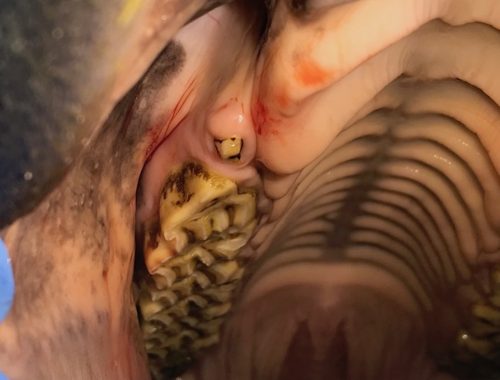Ultrasound is a valuable, non-invasive, diagnostic imaging tool commonly used in the horse. At Ascot Equine Veterinarians, the combination of our dedicated staff, multiple ultrasound machines and an array of different transducers supports examination of a wide range of body systems.
Ultrasound is used widely in lameness examinations to evaluate soft tissue structures of the limbs, such as tendons, muscles and ligaments. It is also an effective way of monitoring the healing process and response to treatment in such cases. Additionally, it can aid in the examination of bone and joint surfaces and confirm fractures in regions that are difficult to radiograph such as the pelvis, ribs and scapula. It is also used for assessing wounds and soft tissue swellings.
Abdominal ultrasound is used routinely in the workup and assessment of colic cases. It is also an important diagnostic tool in the investigation of horses with weight loss and can assist in the detection of tumours, cysts and abscesses. Ultrasound guidance is frequently used to allow safe and precise biopsy of internal structures such as the liver, lungs and kidneys.
Ultrasonography of the heart (echocardiography) is important to assess the chambers and valves of the heart and is invaluable in the assessment of the significance of many types of heart murmur. Colour flow Doppler is used to assess dynamic blood flow through different parts of the heart. Ultrasonography may also be useful for assessing thrombi and peripheral blood vessels.
Ultrasonographic assessment of the thoracic cavity, including the lungs, is important in the assessment of horses with pneumonia, lung masses or pleural effusions. The surface of the lung can be examined and early accumulation of fluid in the chest cavity can be detected.




